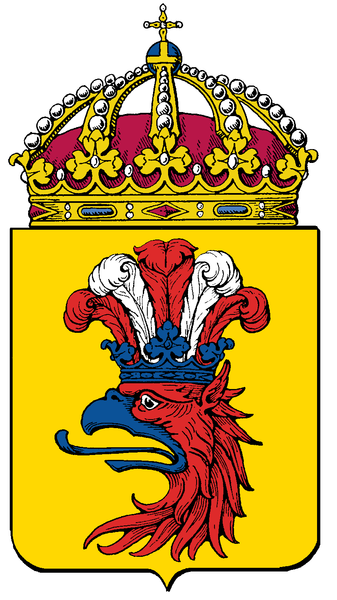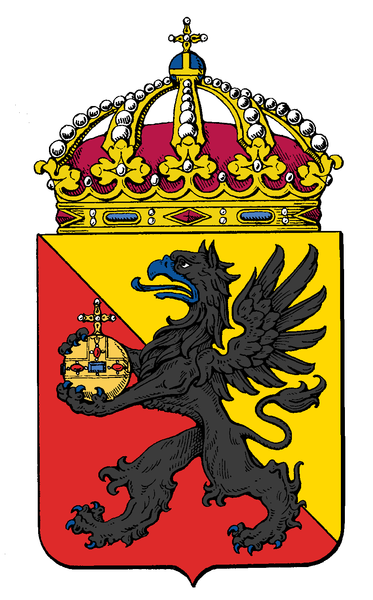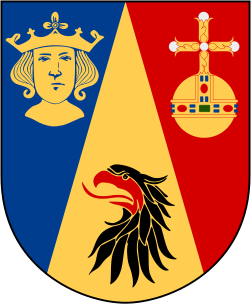Historicaly Sweden then was divided into Landskap, for which Arms where created to display in the funeral procession of King Gustavus Vasa in 1560. Later new Arms where created for Landskap which where added to the Swedish Crown. It should also be noted that Finland at this time where an integrated part of Sweden and Arms also where created for the Landskap in Finland (which continued to be used when Finland became a Grand Duchy under the Russian Czar and in the independent Finland after 1917). The Landskap have no administrative function this instead is exercised by a unit called Län headed by a Landshövding (which acts as the Government/King's representative). The Län sometimes have the same borders as the older Landskap and then uses the undifferented Arms ensignend by a Royal Crown (the Arms of a Landskap may be ensigned by a Ducal Crown). When the borders of the Län dosen't correspond to a Landskap or include parts of more than one Landskap new Arms have been created usualy by combinding two or more Landskap Arms. In recent Years there have been som reductions of the number of Län thus the old Skaraborg, Älvsborg and Göteborg och Bohuslän have been united to form the Västra Götaland Region. The Arms created for this unit was not that creative as it quartered the Arms of Landskap which are included with those of the City of Göteborg.

I. Göteborg, II. Bohuslän, III. Dalsland and IV. Västergötland.
The two Län in the Landskap Skåne, Kristianstad and Malmöhus was also united to form Skåne län. This new Län does use a differented form of the Landskap Arms of Skåne.

Arms of the former Kristianstads län. Approved in its final form in 1939. The Arms actually shows the Crest of the Arms of the City of Malmö (one of the few Civic Arms in Sweden that have a Crest).

Arms of the former Malmöhus län. The Chief alludes to the lesser Arms of Sweden. The Griffin's head are from the Arms of the City of Malmö. This Picture dosen't correspond with the final approval from 1939. This had the Crowns in fess not two and one.






